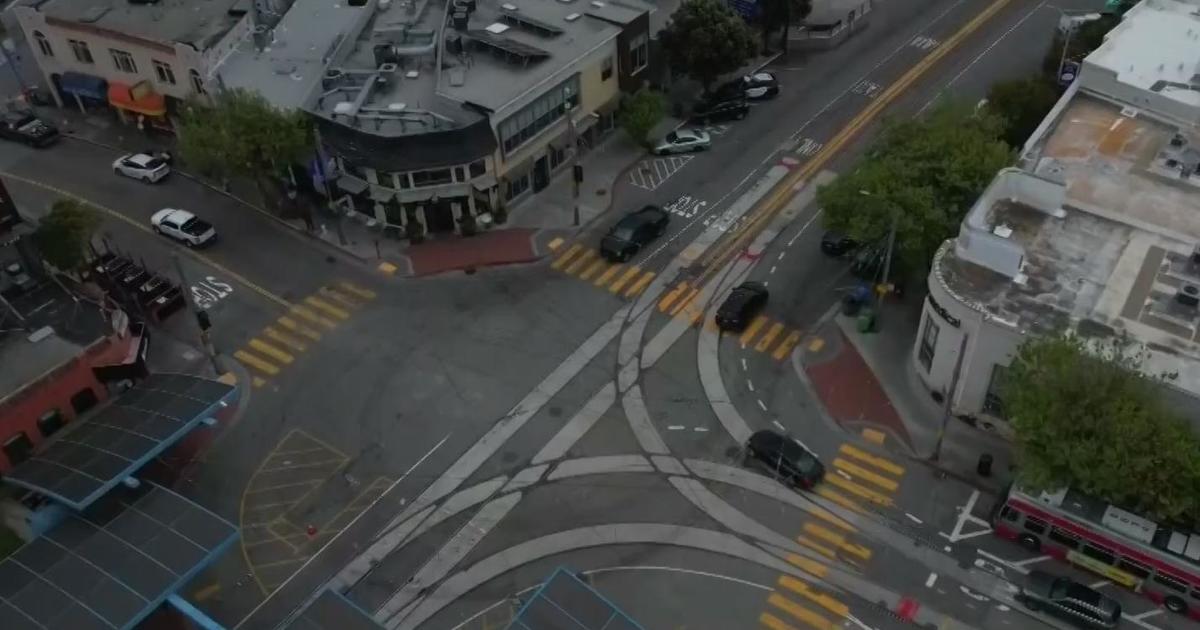State Utilities Commission Proposal Reduces Solar Rooftop Incentives For California Homeowners
SAN FRANCISCO (KPIX) -- If you're thinking of going solar, better act quickly; the California Public Utilities Commission issued a proposed decision Monday to reduce incentives for rooftop solar systems.
The proposal is not yet set in stone, with a final vote is set for late January. As KPIX 5 discovered, there are powerful interests on both sides of the divisive issue.
READ: California Public Utilities Solar Panel Proposed Decision
Utilities argue solar customers are getting too sweet of a deal at the expense of non-solar customers. The solar industry warns reducing incentives could kill rooftop solar and undercut the goal of 100% clean energy by 2045.
Lynn Stanton believes in doing her part to save Planet Earth. She drives an electric car and has solar panels on the roof of her home in Walnut Creek.
"What made it possible for us to do it though, was that we would be able to recoup our investment by having reduced energy bills and being able to sell some of our energy back into the grid," said Stanton.
She says it's a win-win for everyone: Clean energy and savings for her family and locally produced clean energy for her neighbors as well.
"On a good day in the summer, we're producing probably three times what we use in our house. So we're powering our house completely and we're powering two other houses locally with the solar generation.
But she says her beliefs and the future of California's renewable energy goals are under attack. The CPUC is poised to drastically reduce incentives for rooftop solar.
"If they change the incentive structure, it will make it prohibitively expensive for people to install rooftop solar. It's got to have a completely chilling effect on the entire industry," said Stanton.
At stake: Something called Net Energy Metering, the way the utilities currently calculate the bill for solar customers.
Here's how it works: During the day when solar panels produce more electricity than you can use, the excess is sent to the grid. The utility buys your electricity and your electric meter spins backwards. At night when there's no sun you buy electricity back, spinning the meter forward.
Under a proposed new net metering system, utilities including PG&E would cut the rate they currently pay rooftop solar customers for that excess power from about 25 cents per kilowatt hour to potentially as little as 6 cents per kilowatt hour. They also want to add a monthly grid access fee.
"TURN believes it's absolutely important to put solar equity first," said Mark Toney, Executive Director of Toward Utility Rate Normalization or TURN, a consumer group that supports reducing incentives for solar.
"Solar comes from two different places, from large scale operations, that's 3 cents per kilowatt hour. The solar rooftop: we're paying 25 cents per kilowatt hour. So that's a huge difference. 3 cents per unit versus 25 cents per unit. So what that means is that the solar rooftop owners are being overpaid for their solar," said Toney.
But Brad Heavner with the industry group California Solar and Storage Association disagrees.
"They are using lousy math to trump up all the costs," said Heavner.
According to Heavner, cheaper energy from solar farms actually costs a lot more when you factor in transmission all the way from the desert to the cities.
"Rates have gone up a lot in recent years and the reason rates have gone up is because of wildfires and because of the cost of transmission lines," said Heavner.
His group analyzed PG&E records that show customers are paying an average of $996 dollars a year on their bills for transmission and distribution, up from $660 dollars a year five years ago. That is a 66% rate hike.
"Then they turn around and say, 'Don't look at me. It's the solar customers that are causing rates to go up,'" said Heavner.
PG&E turned down our request for an interview for this report, referring us instead to a coalition it belongs to called Affordable Clean Energy for All.
"This is where solar likes to avoid talking about the cost shift," said the Association's spokesperson Kathy Fairbanks. "The problem with Net Energy Metering is that the program puts disadvantaged Californians in a situation where they are paying for costs to operate the grid that people with rooftop solar should be paying, but they're not paying because the subsidies are so generous."
She points to a study the utilities commissioned that found non-solar customers are paying an average of $240 dollars more per year to make up for what solar customers are "not" paying to maintain the grid.
"The Net Energy Metering program is outdated. It's 25 years old. Solar panels are 70% cheaper now, and the program hasn't been updated to reflect that," said Fairbanks.
Back in Walnut Creek Lynn Stanton says it all comes down to common sense.
"It only makes sense to encourage as much as possible of solar rooftop generation locally to avoid having to use a long range grid to transport energy over distances," said Stanton.
As a current solar homeowner she may not be impacted directly. The proposed reduced incentives will most likely only be for new customers.
"Either way it's a bad deal for California," insists Stanton. "We need more rooftop solar, so it's bad even if it only affects new people. And if it affects current rooftop solar it's almost like reneging on a deal that you made."
The CPUC-proposed decision also includes a Grid Participation Charge for solar customers and a temporary credit to encourage battery storage.



